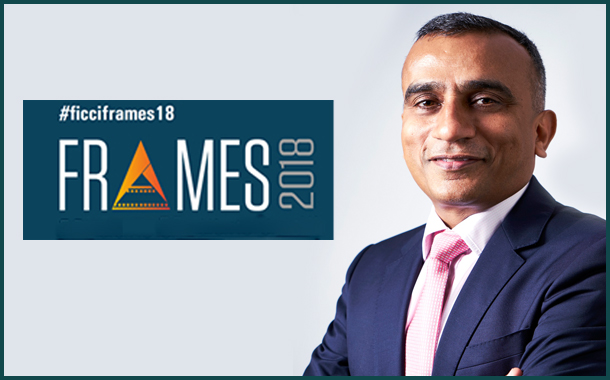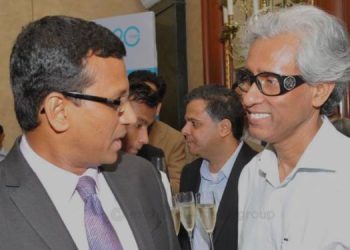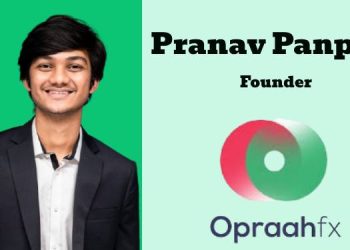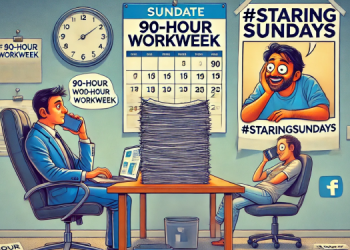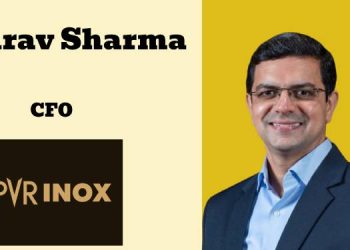Sudhanshu Vats, Group CEO, Viacom18 start the day’s proceedings of at FICCI FRAMES 2018 on 5th March with his Key Note address.
He started of with a Story of Mice and Elephants to emphasize why size is not always the most important asset and it is the Force Multiplying capability of the Industry towards other sectors that far more important than a number or a target, “We are in the business of story-telling, so let me take the liberty of making a point with a story. Our country is a gold-mine of stories and fables – let me quote one from the Panchatantra.
“Once upon a time, a village was ruined by a strong earthquake. The villagers who survived had to move and over time the village grew deserted. Soon a bunch of mice started inhabiting the village – it was perfect, some food leftovers, some structures – and a source of water nearby – a fresh lake. Over time, their numbers multiplied several times over. There were thousands of mice living in this village. Soon a herd of elephants realized the location of the lake and started visiting regularly for the dose of water. Unfortunately, each time they would pass through the village – inhabited by rats – and end up trampling a few hundred each time they moved. The mice decided to hold a meeting and the ‘king of mice’ went to the ‘king of elephants’ with their problem. He said, oh king of elephants, please change your route so that my brothers and sisters can live. The Elephant King said, what can you do for me? The Mouse king said (and I hope the folks from Disney don’t ask me for a royalty – this is an Indian Panchatantra mouse – not your kind of mouse), Elephant King if you give me your word that you will change your route, I promise to help you in times of need. The Elephant King said – actually, why Elephant King – Elephant Queen – let’s make her a queen – as a sector we mustn’t reinforce gender stereotypes – said – you mice are too small to help us – but we will oblige and change our route. The Mouse King returned and over the next few days the mice again began to move around freely in what was now their village. A couple of weeks later a bunch of ivory traders entered the vicinity- to trap and poach elephants. They had these thick, strong nets that they laid near the lake. When they elephants visited next they were trapped. They were about to lose hope when they elephant queen remembered the promise of the Mouse. She asked the crane nearby to send word. When the Mouse King heard about the plight of the elephants, he immediately ordered 1000s of mice to go to the lake. Over the next few hours, they nibbled away at the nets at 1000s of spots simultaneously. At first it seemed impossible, but over time they managed to free the elephants. The moral of the story is simple: It’s not size that always matters. Sometimes, even a small mouse can be more important than a large elephant”.
“Now you might be wondering why I took 10 minutes of your time, trying to remind you about a story that you might have studied in the first grade or even sooner – well, ladies and gentlemen, I want you to rethink our obsession with size. As industry leaders, we take pride in setting huge billion-dollar milestones that we hope will make others ‘respect and admire’ us more. We hope that the government will take notice of us – we hope that our boards and promoters will reward us – we hope that leading talent will work with us and so on. But if you step back and think about the linkages our sector has with other sectors – the role it plays as a force-multiplier- the sway we have over our audiences – every Indian around the world – and others with a shared culture – we suddenly realise that we are far more important than a number or a target”.
He highlighted the impact of Media Sector and its influence in our day-to-day lives with slew of questions, “Think about it. Where is it that you first heard about the mobile phone in your hands? Why do you even use it? How did you come across the shampoo you used this morning? What did you do in the car while driving to this conference? Well for most of you, the answer will be some form of media, be it print, or digital or electronic”.
Doling out the numbers in terms of the industries contribution towards Economy, GDP and Job creation Mr Vats said, “Let me deconstruct this in terms of numbers – hard numbers. Our industry has added over INR 50K Crores in output in the last five years and has a revenue size of INR 130-135K Crores. Indirect and induced benefits to the economy of the total industry size is ~INR 450K Crore, with a contribution of 2.8% to GDP. The industry also employs, across both formal and informal sectors 1-1.2 million people, contributing significantly to India’s job creation.
He also divulged the data to support the Force Multiplying abilities of Media Sector towards other sectors like Telecom, Travel & Tourism, Garment Industry etc and listed the following:
- Did you know that by several estimates, video streaming accounts for over 50% of total mobile internet usage in India? This is expected to touch 75% over the next 3-years. Today itself, the contribution of data to telco revenue stands at 20-25%. Imagine what will happen when VR becomes a commonplace phenomenon?
- Travel & Tourism is 150Bn USD industry and a significant employer for the country. By some estimates, it is responsible for ~9% of the country’s jobs. Did you know that after Padmaavat, several newspaper reports indicated that the interest around Khilji’s tomb in the Qutub Complex in Delhi has actually increased substantially?
- Let’s look at the garment industry. Did you know that after Padmaavat – bear with me for bringing it up again – but we are – like all Indians- immensely proud of that project – has reignited an interest in Rajwada dresses. It’s too early to say, but it might ignite a renaissance of sorts in age-old techniques of embroidery that would have otherwise been lost.
- There are other sectors – the satellite industry, Set Top Boxes and other equipment – including telecom handsets, events, food and retail – that we drive.
“While I stated earlier that the direct revenue generated by the media and entertainment industry is ~INR 130-135K crores, when considering the total economic impact including direct, indirect and induced benefits, our contribution is almost 3.5 times that, today.Imagine our multiplier effect when India becomes a 5 Trillion dollar economy in the next 8-9 years????”
On the Industries ability to create unique jobs that are automation agnostic, he said,“There is another aspect to our industry, that makes us special. I am talking about the nature of jobs that we can generate. Today we employ 1-15 Mn Indians directly and indirectly. Let’s say we’ll add another million over the next 5 years. This might seem small given our total workforce of 460 Mn but these are jobs that are non-routine – meaning they are the least likely to be automated, given their nature. More importantly, most of these jobs will need ‘on-the-job training’ – meaning that we don’t need to wait for our education infrastructure in the country to catch up”.
He drew a quick comparison of the Indian Media Sector’s performance with that of the average of developed Nations and said,“You see, the question to ask is given our role as force multiplier, how much steam do we have left? Because, if the engine starts to weaken, it is obvious that our role as a force multiplier will also reduce. Well there’s a lot of good news on that front.
“Our ad-spend to GDP ratio is still 0.4% compared to 1% in developed economies.
The total sector is ~1% of GDP compared to 2.5% or so in developed economies.
While our TV audience (780 Mn) is bigger than that of the total population of Europe (745 Mn), we still have only 64% penetration with 183 Mn Households – with electrification progressing at a blistering pace – imagine future growth.”
He also reminded the government on pending to-do list that the Media Industry is demanding for years and said, “Every time, we end up at the forums, we prescribe a to-do list for the government. This time I want to leave you with 3 things that we need to do – one for the government, one for us as the industry and the final one for us as society.
From the government, my ask is what I’ve been asking for some time now – an e-enabled single window clearance. This will go a long way in enhancing the ease of doing business and facilitate the growth of our industry even further. This is needed for films, events, licensing, et al.
He insisted on the need for greater collaboration among the stakeholders to scale up new heights, “We need to learn to collaborate as an industry. We need to collaborate with competitors at times so collaboration and competition can coexist. The scale of industry is such that innovation and disruption is bigger than what any single one of us can achieve. It is only when we form partnerships … collaborate … that we can achieve greater heights.
He reiterated the need for change including the way of measuring audience and batted for welcoming starup minds, “We need to become comfortable with data because we need to bring in more transparency, authenticity and objectivity to our data. If a new-age entrepreneur comes to us, we are skeptical of his idea or technology. If someone approaches us with a new way of measuring say our audiences, we are dismissive. We need to change this attitude. We need to change this mindset. Like the Queen Elephant and the King Mouse did. At our end, we have just started a pan-network engagement programme with startups where we partner and help them with validation – it’s called VStEP. – the Viacom18 Startup Engagement Programme. You can check it out at www.vstep.viacom18.com.
Before Signing Off Mr Sudhanshu Vats said, “Finally, my third ask is that as a society let us learn to laugh at ourselves, sometimes; loosen up a little. This is an industry that has creativity at its core and we will be able to scale greater heights when we learn to afford creative people some leeway. We must operate within a larger boundary towards our responsibility to society but be cognizant to not take ourselves too seriously, lest we stifle the creativity that lies at the heart of society”.
“I want to sign off by saying that let us, the media and entertainment industry, be the force multiplier for growth, the force multiplier for change, the force multiplier for jobs and above all the force multiplier for the good of society”.

